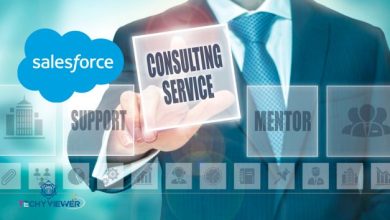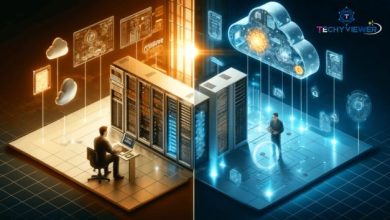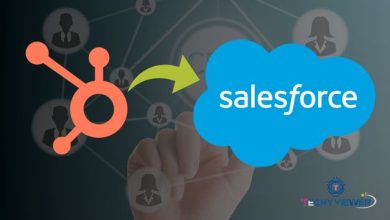Mastering MLOps: Tools, Challenges, and Strategies for Seamless AI Deployment
Modern artificial intelligence systems’ backbone is Machine Learning Operations, which lets companies simplify the construction, deployment, and maintenance of machine learning (ML) models. Never before has strong MLOps procedures been more required as companies more and more depend on AI to guide their decisions. Still, bringing MLOps into reality is no easy task. It calls for negotiating a sophisticated environment of tools, techniques, and difficulties.
This post examines the world of MLOps from the tools that drive it to the obstacles companies meet in attaining constant deployment. This manual will give data scientists, ML engineers, or business leaders action-oriented ideas to improve their MLOps pipeline.
What is MLOps?
MLOps, which stands for Machine Learning Operations, is a set of methods and instruments meant to harmonize ML system development (Dev) and ML system operations (Ops). ML-Ops, inspired by DevOps, stresses the need of automating and standardizing the entire lifecycle of ML models—from development to deployment and monitoring.
MLOps aims to:
- Speed up model deployment by shortening the time needed to get models from testing to production.
- Guarantee Reproducibility: Consistency should be kept at all phases of the ML lifecycle.
- Encourage smooth teamwork among data scientists, engineers, and operations staff.
- Enable Continuous Improvement: Continuously monitor and retrain models to ensure optimal performance.
Also Read: The Role of Generative AI in Personalizing Customer Interactions
Key Components of MLOps
MLOps comprises several important elements that must be understood by splitting it down:
Building of Models
Data collection, preprocessing, feature engineering, model training, and evaluation characterize this phase. Here often used software include Jupyter Notebooks, TensorFlow, and PyTorch.
Model Deployment
Training a model requires its deployment in production. Packaging the model, generating APIs, and fitting it with current systems are all part of this.
Supervise Models
Models have to be regularly checked after they have been deployed to confirm they operate as planned. This comprises drudgery, latency, and drift.
Renovation of Model
Models frequently deteriorate with time since data distribution changes. Retraining guarantees they maintain relevance and precision.
Organizing and Collaboration
MLOps stresses teamwork as well as governance to guarantee conformity with legal requirements.
Important MLOps Tools
There are many tools in the MLOps services ecosystem created to solve particular problems throughout the life cycle of ML. The following tools are some of the most used:
Handling of Data Versions and Management
Tracks changes in data sets and machine learning models in DVC (Data Version Control) in order to guarantee reproducibility.
For big-scale ML initiatives, pachyderm manages data pipelines and versioning.
Track of experiments
MLflow records parameters, keeps model artifacts, and keeps track of experiments.
Weights and Biases: Offers collaboration, data visualization, and experiment tracking tools.
Model Development and Organization
orchestrating ML processes, a platform native to Kubernetes with Kubeflow
Apache Airflow: schedules and automates involved workflows including ML pipelines.
Model Deployment,
TensorFlow Serving uses TensorFlow models in actual use cases.
Seldon Core turns ML models ready for implementation into microservices.
Model Surveillance
Prometheus alerts teams to deviations and monitors model performance.
Artificial intelligence: Monitors model performance and data drift over time.
Cooperation as well as government
A cooperative platform for data scientists and engineers to create and release ML models, Dataiku is
Tools for model governance, reproducibility, and cooperation are offered by Domino Data Lab.
Challenges in Implementing MLOps
Although MLOps presents many advantages, companies usually have great difficulties in putting it into practice. The ones most frequently encountered are listed right here for discussion:
Nature of ML Pipelines
A few phases with their particular tools and procedures characterize ML pipelines. Handling this complexity can be quite difficult.
Standardizing Issue
ML is hard to set regular procedures since it does not have accepted conventions, unlike conventional software development.
Problems in Data Management
ML models depend on good data, but controlling massive sets, guaranteeing data consistency, and managing versioning can be difficult.
Model Drift
Models can deteriorate with shifting data distributions over years. Continuous checking and retraining help to notice and resolve model drift.
Flexibility
Sizing ML pipelines to tackle high traffic and massive data sets can be technically difficult and require lots of resources.
Operating across different departments
Often operating in silos, data scientists, engineers, and operations team cause misunderstandings and inefficiency.
Complying with Guidelines and Rules
Another level of complexity arises from guaranteeing that ML models meet legal requirements including GDPR or HIPAA.
Best Practices for Mastering MLOps
Organizations that wish to effectively install MLOps should follow these best practices:
Outcome from Automation
Automate model training, data preprocessing, and deployment among other monotonous chores to cut mistakes and free time.
Establish Consistent Workflow.
Create best practices and regular processes to guarantee uniformity among projects and teams.
Buy the right tools
Select instruments that fit your company’s requirements and work smoothly with your current systems.
Watch Always
Use thorough monitoring systems to follow model performance, identify drift, and then activate retraining when needed.
Engender Cooperation
Through shared tools and platforms, foster cooperation among data scientists, engineers, and operations teams.
Provide Governance First
Use governance structures to keep model transparency and guarantee adherence to rules.
Begin little and increase step by step.
Start with a modest, doable project and progressively expand your MLOps methods as you gather knowledge.
Also Read: Ai-Writer: Transforming Content Creation With Artificial Intelligence
The Future of MLOps
MLOps will change along artificial intelligence development. Trends to keep an eye on include these:
Rise in AI Governance Acceptance
To guarantee moral and legal application of ML models, businesses will give first attention to artificial intelligence management.
Development of No-Code/Lower-Code Platforms
Low-code and no-code MLOps systems will levelize artificial intelligence by allowing non-technical users to create and distribute models.
Incorporating with DevOps
MLOps will gradually merge with DevOps methods to produce a coherent approach to ML and software development.
Emphasize Explainability
Developing trust and guaranteeing equity will depend on tools offering information on model decision-making.
AutoML developments
Reducing the need for manual intervention, AutoML systems will automate more parts of the ML lifecycle.
Conclusion
Bridging the distance between model development and constant deployment, MLOps is a key enabler of AI success. Using the appropriate tools and following best practices will help businesses address the obstacles of MLOps and release the entire promise of their AI projects.
Staying ahead of the curve will call for dedication to creativity, partnership, and ongoing growth as MLOps develops. Now is the moment to accept the power of MLOps and propel your AI initiatives to new heights whether you are only starting your MLOps path or want to improve your current pipeline.



